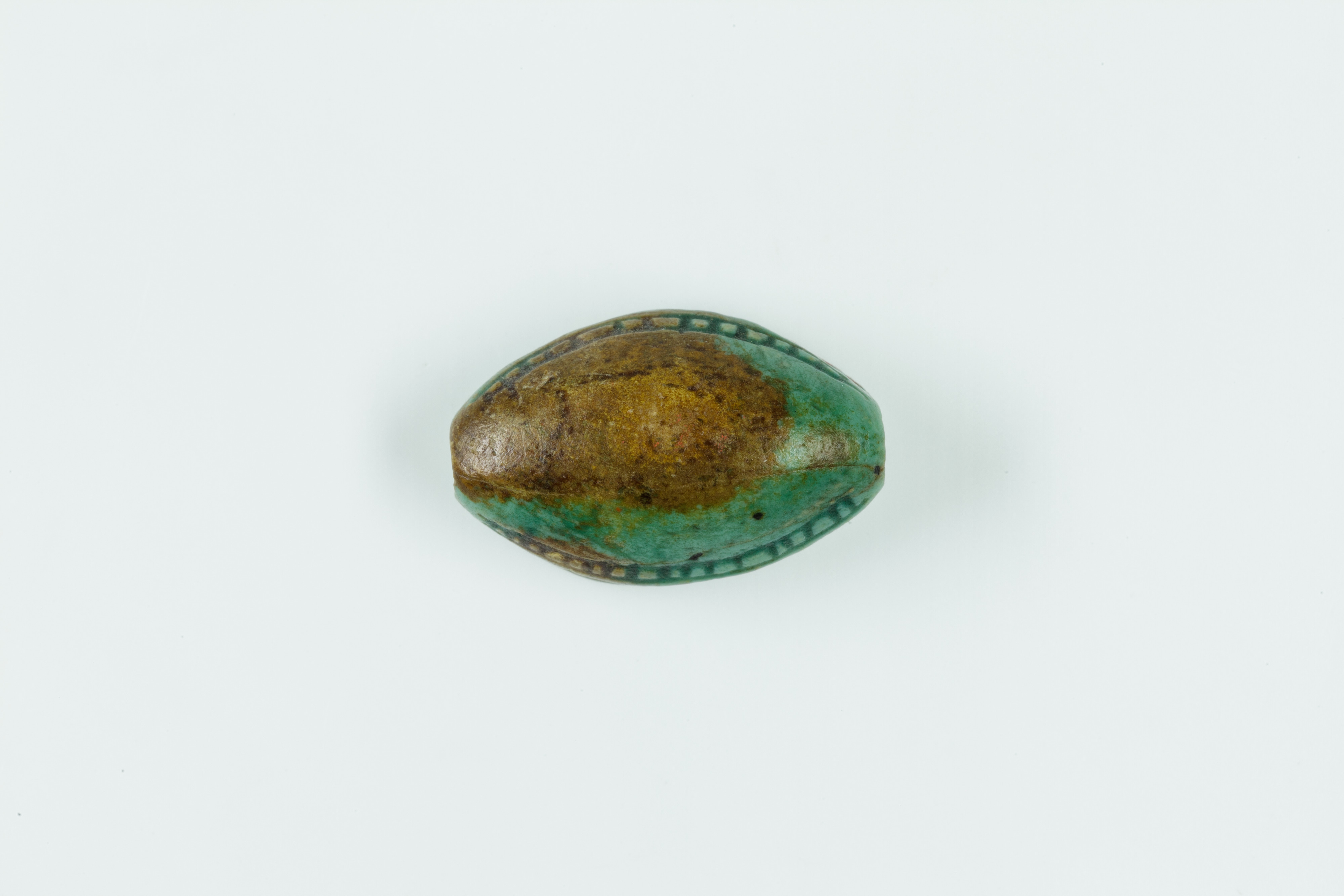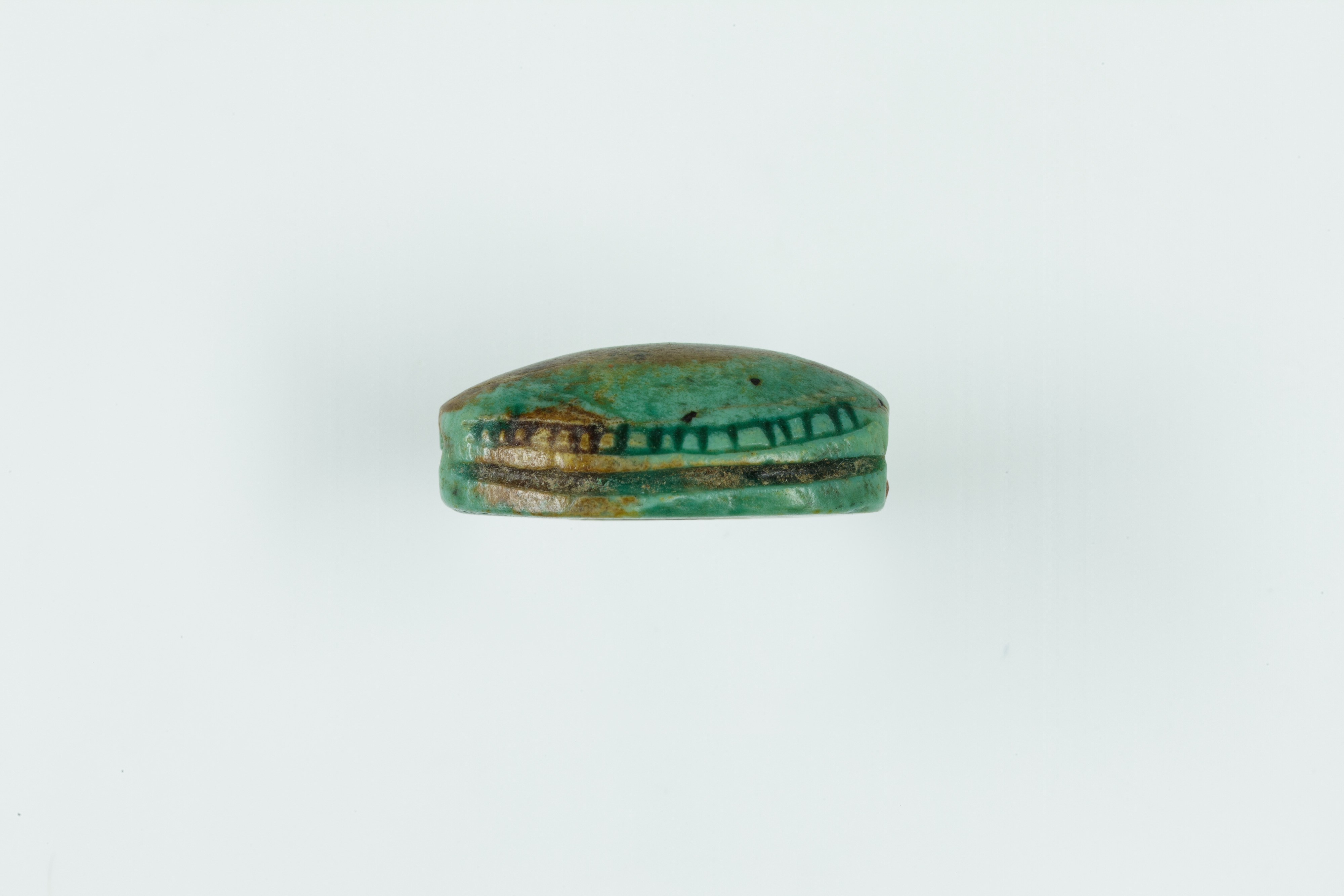Cowroid with Outward-facing Merged Lions and Sun Disk
New Kingdom–Third Intermediate Period
This is a cowroid, a seal-amulet imitating the cowrie shell. As early as prehistoric times, cowrie shells were worn as adornment and amulets in Egypt, and their imitations in stone or faience appear in the early 2nd millennium B.C. They are often associated with fertility because the ventral opening of the shell looks similar to female genitalia.
This cowroid’s underside shows a pair of merged lions, a design rarely found on seal-amulets. A sun disk sits above. The pair of lions may refer to the twin gods Shu and Tefnut, respectively gods of the air and the rain according to the creation myth of Heliopolis: Shu and his sister Tefnut can take the shape of lions placed back-to-back, supporting the sun disk. This pair of lions, however, are merged at the shoulders, as seen in Ptolemaic inscriptions where they refer to the lunar god Khonsu.
Due to rights restrictions, this image cannot be enlarged, viewed at full screen, or downloaded.
This artwork is meant to be viewed from right to left. Scroll left to view more.





